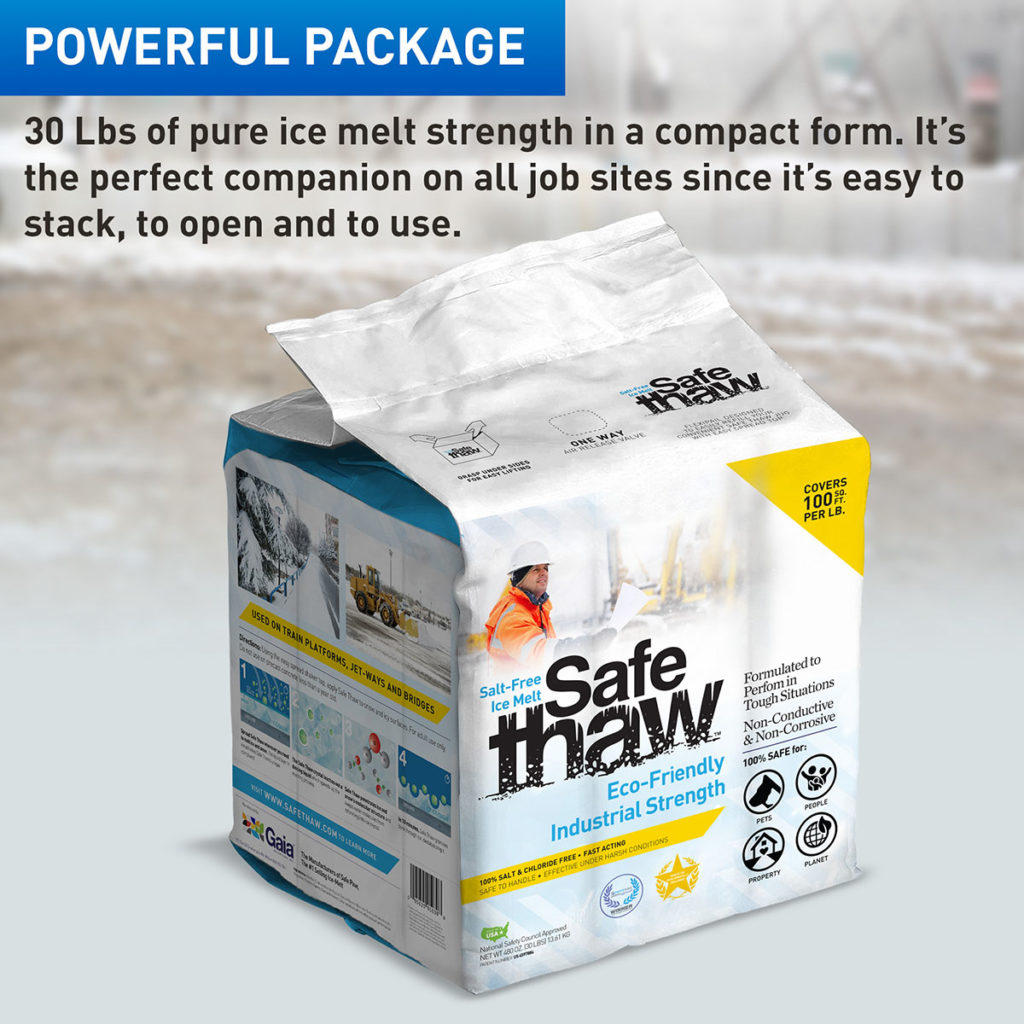Cracks In Your Concrete Driveway – Do This Immediately

Repairing concrete cracks can also improve the aesthetic of a driveway, which is a secondary advantage of doing so. In addition, it is a better technique to help improve the curb appeal of your property because many homes have driveways that face the front of the house.
Before commencing the repair, you should inspect the surrounding area and figure out what caused the break. Growing tree roots, impact damage, weight overloading, using toxic salt ice melts, and other factors can all contribute to cracks in concrete. Hence, it is vital to use a concrete-safe ice melt.
The most prevalent reason for cracks in concrete is standing water. Keeping your driveway and walkways clear of ice and snow might be difficult if you reside in a region with freezing temperatures. Therefore you need to understand how to melt ice on concrete without salt.

Safe Thaw
Safe Thaw was created as the ice management solution for tough winter environments. Ideal in commercial and industrial properties, shops, government agencies, bridges, and construction.
How To Repair The Cracks
- Clean It First
The first step is to wash away debris, grime, mold, and even loose asphalt, which will assist the repairs in enduring as long as possible. You can remove debris with a broom or leaf blower, and you can even wash your driveway.
- Make Crack Sealant
Examine the sealant’s label. Some are packaged in tubes or can be squeezed directly into them, while others must be combined with water. If you overfill a crack, let it cure before removing the excess with a scraping tool or utility knife.
- Allow It To Dry
A sealant takes around 24 to 48 hours to dry. Before adding an extra layer, follow the instructions on the label.
- Inspect
If necessary, apply additional sealant to difficult places. Keep the weather in mind once more. If, after one application, you find that more serious steps are required, you may choose to patch or resurface your driveway instead.
How To Melt Ice On Concrete Without Salt
Rock salt is not similar to ice melt, but it is available at a low cost and is not difficult to find at your neighborhood hardware shop. However, salt can damage the protective sealers and finishes.
Therefore, before you grab that bag of rock salt and start sprinkling it all over your driveway, you should know that there are alternative options. Some of these are even better at removing ice to maintain the safety of concrete surfaces while keeping them relatively free of ice and snow. Instead of rock salt, you can use less corrosive and safer commercial ice melt products.
Safe Thaw: The Best Concrete-Safe Ice Melt
Safe Thaw is one of the few ice melt products which are safe concrete, both new and old. It’s a salt-free, natural ice melt that works effectively for 72 hours.
It has a time-released action and a Non-corrosive structure with a glycol-injected crystalline amide core. Unlike rock salt and other salt-based ice-melting products, they can melt ice to 2 degrees below zero.
The salt-based remedies take longer to work, and the crystals stay on snow and ice, damaging concrete and metals. In contrast, Safe Thaw is free from hazardous chemicals.
100% salt & chloride-free, fast acting Ice Management Solution
Conclusion
Salt residue can damage concrete, pavers, grass, wood, and decks. Safe Thaw is unique because it doesn’t contain salt like other ice melts and will protect the health and shine of your concrete for years to come.
Try Also Our Other Winter Safety Products:
Safe Paw
The Original and #1 Selling Pet and Child Safe Ice Melt for over 20 years. Guaranteed environmentally safe –It won’t harm animals or children, and it won’t damage your property. That’s Safe Paw. Safe Paw can change how winter affects our planet.

Walk On Ice
The handy disposable canister can be taken everywhere, with the same 100% naturally occurring minerals that provide instant traction on ice or snow. Use it on sidewalks, steps, or as an instant traction agent for your car.



